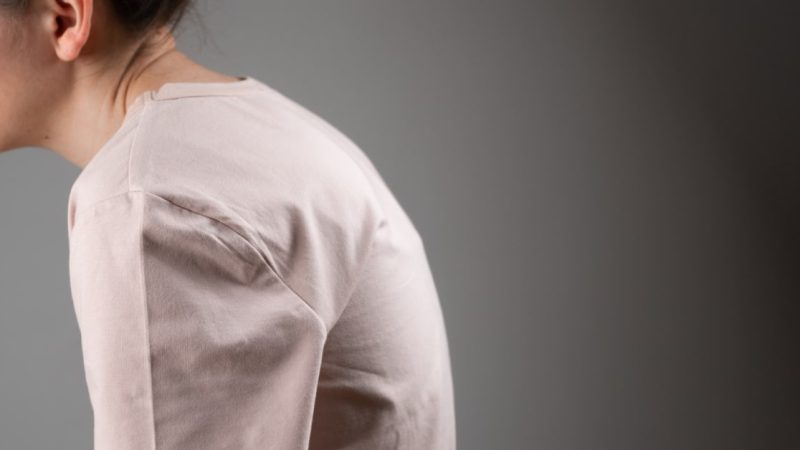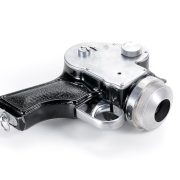A dowager’s hump, often recognized as a forward curve at the top of the spine where the neck meets the upper back, affects millions of people. Whether caused by poor posture, muscle imbalance, osteoporosis, or long hours spent sitting and looking down, this condition can lead to discomfort, self consciousness, and long term spinal issues if left untreated. One of the most effective noninvasive tools for addressing this issue is a dowager’s hump brace. This guide explores everything you need to know about finding the best brace, how it works, the benefits it provides, and what to look for before making a purchase.
Understanding What a Dowager’s Hump Is
A dowager’s hump, also known as a buffalo hump or hyperkyphosis, develops when the upper spine begins to curve forward. Over time, the muscles in the neck and shoulders weaken, allowing the head to lean forward and the upper back to round. Modern lifestyles contribute greatly to this issue, especially with prolonged smartphone use, computer work, and sedentary habits. While exercise, physical therapy, and lifestyle changes are important, a posture brace can offer support and alignment that helps correct the problem more efficiently.
Why a Dowager’s Hump Brace Can Help
A dowager’s hump brace is designed to gently pull the shoulders back, support the upper spine, and encourage proper alignment. By repositioning the shoulders and reducing forward head posture, the brace helps reduce strain on the neck and upper back. Over time, this can retrain the muscles and reduce the visual appearance of the hump. Many people notice improved posture, reduced pain, and a more comfortable daily experience after using a brace consistently.
Key Features to Look for in the Best Brace
Not all posture correction braces are created equal. The best dowager’s hump braces share several important qualities that ensure comfort, effectiveness, and long term results. First, adjustability is essential. The brace should allow you to modify tightness and fit according to your comfort level. Second, padding plays a major role in preventing discomfort during long wear. Look for breathable, soft materials that reduce irritation. Third, the brace should provide support without restricting movement. Lightweight and flexible designs encourage natural posture improvement without feeling stiff or bulky. Lastly, quality materials are important. A well made brace lasts longer and maintains proper tension over time.
Comfort Matters When Choosing a Brace
Wearing a posture brace for dowager’s hump correction requires consistency, which is only possible if the brace is comfortable. Some braces can feel tight or rigid, causing redness or soreness during extended use. The best braces address this by using breathable fabric that allows airflow and reduces sweating. Wide straps help prevent digging into the shoulders, while smooth stitching reduces friction on the skin. Since many people wear these braces under clothing, a slim and discreet design is important. Choosing a comfortable brace increases the likelihood that you will wear it daily and see noticeable posture improvements.
How a Posture Brace Improves Alignment
A brace does not magically remove a dowager’s hump, but it does help reposition the spine and encourage healthy posture habits. When the shoulders are gently pulled back, the chest opens, the neck lengthens, and the upper spine begins to return to its natural curve. Over time, the muscles responsible for supporting posture become stronger. A brace essentially acts as a reminder to maintain proper alignment throughout the day. Combined with regular stretching and strengthening exercises, it plays an important role in long term spine health and posture correction.
Using a Brace Safely and Effectively
To get the best results from a dowager’s hump brace, it is important to use it correctly. Start by wearing the brace for short periods, such as fifteen to thirty minutes per day, to allow your body to adjust. Gradually increase the duration as your posture improves and your muscles adapt. Avoid wearing the brace too tightly, as this can restrict movement or cause discomfort. The goal is gentle correction, not forceful pulling. For the best outcomes, pair brace use with exercises that strengthen the upper back muscles, stretch the chest, and encourage mobility in the spine.
Additional Benefits Beyond Posture Correction
While the primary goal of a dowager’s hump brace is posture correction, many people experience additional benefits. Pain relief is one of the most common. When the spine is aligned correctly, the muscles and joints no longer work against unnatural positions. This reduces tension in the neck, shoulders, and upper back. Another benefit is improved breathing. Forward head posture can restrict the chest and diaphragm, while an aligned spine opens the airways. Many users also report increased confidence. Standing tall with better posture creates a more balanced and confident appearance.
How to Know Which Brace Is Right for You
Choosing the best dowager’s hump brace depends on your specific needs. If you have mild posture issues or work long hours at a desk, a lightweight brace may be sufficient. If you experience more pronounced curvature or discomfort, a supportive brace with reinforced structure may be more effective. People with sensitive skin or a history of irritation should prioritize braces made from hypoallergenic, breathable materials. It may also help to consider how often you plan to wear the brace. Daily wearers often prefer slim designs that fit comfortably under clothing.
Daily Habits That Help Enhance Brace Results
A dowager’s hump brace is a powerful tool, but it works best when combined with healthy daily habits. First, focus on strengthening exercises, particularly those targeting the upper back and core. Weak muscles often contribute to poor posture. Second, stretch the chest and shoulders to reduce tightness that pulls the body forward. Third, practice awareness throughout the day. Notice when your head begins to drop forward or your shoulders slump. Over time, this awareness helps retrain posture naturally. Additionally, ensure proper ergonomics at your workstation by positioning your screen at eye level and keeping your back supported.
Long Term Expectations and Realistic Outcomes
Correcting a dowager’s hump takes time. While a posture brace can provide immediate alignment, long term changes depend on muscle strength, consistency, and lifestyle habits. Many people begin noticing improvements within a few weeks of regular brace use. The visual hump may gradually reduce as the spine realigns and the muscles strengthen. However, severe or structural cases, especially those related to osteoporosis, may require additional medical guidance. Even in these cases, a brace can help reduce discomfort and prevent worsening posture.
Conclusion
Finding the best dowager’s hump brace for posture correction can make a significant difference in your comfort, appearance, and overall spinal health. A high quality brace supports the upper back, encourages natural alignment, and helps retrain posture over time. Combined with stretching, strengthening, and mindful daily habits, it becomes an essential tool for correcting forward head posture and reducing the appearance of a dowager’s hump. With consistent use and the right brace, you can regain better posture, improve confidence, and support long term spine wellness.
FAQs
What does a dowager’s hump brace do
It gently pulls the shoulders back, supports the upper spine, and encourages proper alignment to reduce forward head posture and upper back rounding.
How long should I wear a dowager’s hump brace each day
Start with short sessions of fifteen to thirty minutes and gradually increase as your posture improves. Overuse is not recommended.
Can a brace completely correct a dowager’s hump
A brace can help improve alignment and reduce appearance, but long term correction also requires strengthening exercises and posture awareness.
Is it safe to wear a posture brace under clothing
Yes, most braces are designed to be slim and comfortable enough to wear under shirts. Choose breathable materials for best results.
Who should use a dowager’s hump brace
Anyone with poor posture, forward head posture, or early signs of a dowager’s hump can benefit. People with severe structural issues should consult a specialist.
Also read: Aeron Stool: The Ultimate Ergonomic Seating Solution for Modern Workspaces









